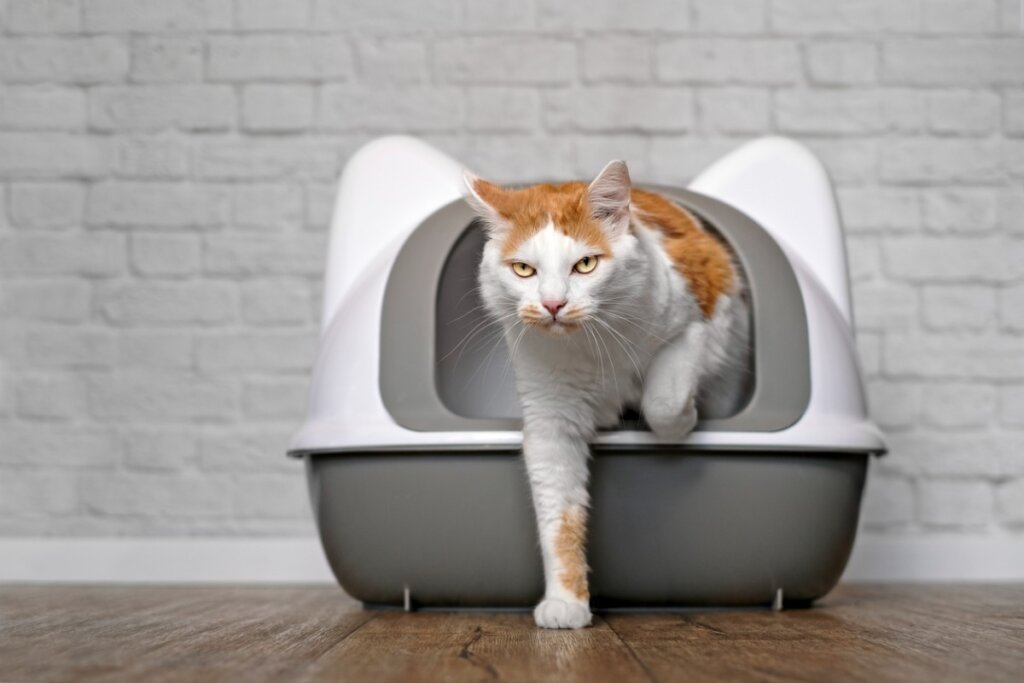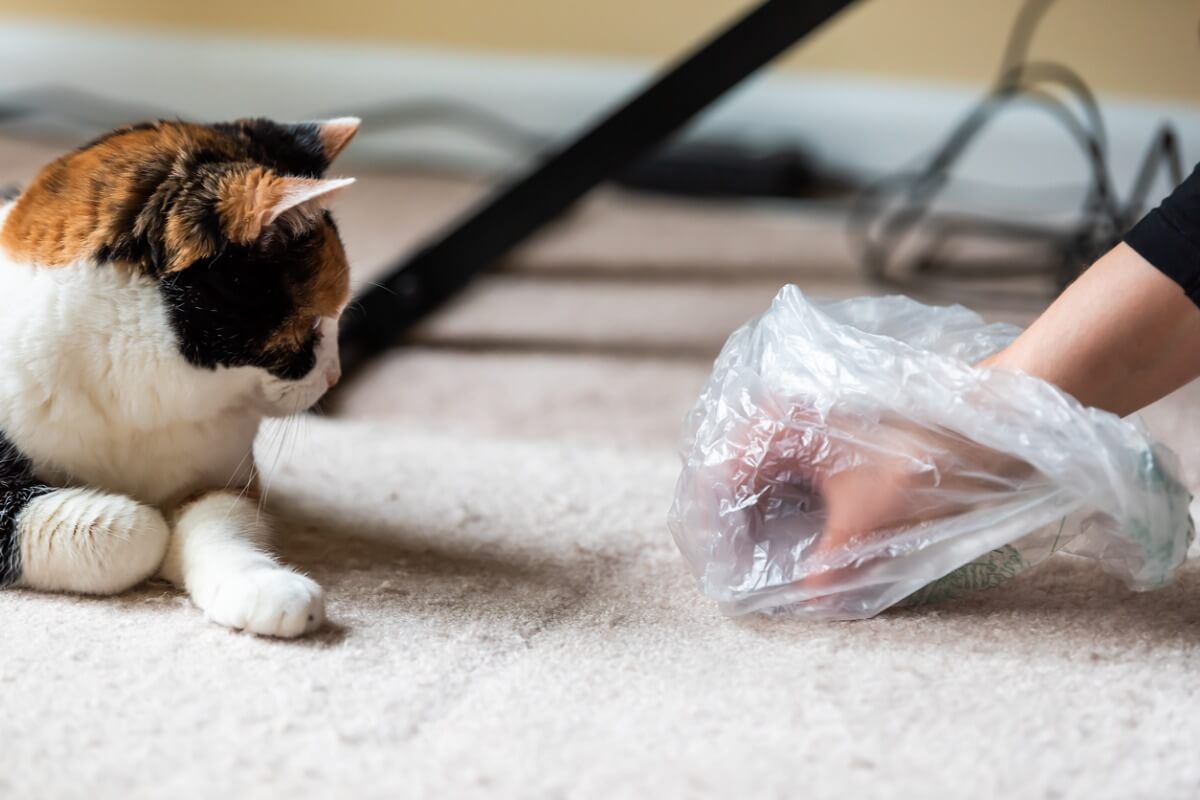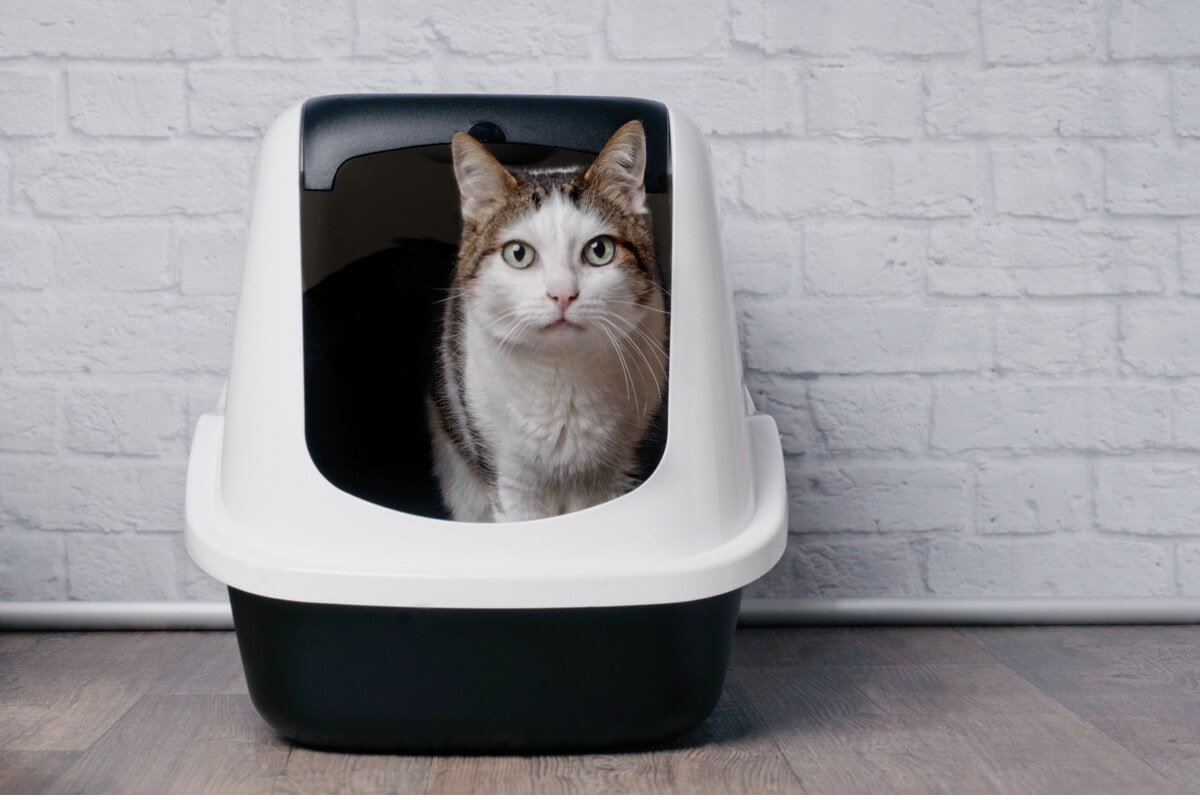10 Ways to Combat Constipation in Cats

Constipation in cats is a common source of concern for owners. Cats that go to their litter box several times without any success, those that wince when they defecate, or don’t defecate at all are giving clear signals that something is wrong.
It’s possible to combat constipation in cats by taking a number of simple steps in everyday life, but it’s also important to know when to go to the vet as a matter of urgency. We’ll show you all the information regarding this important topic in this article.
Causes of constipation in cats
Constipation in domestic felines is characterized by infrequent bowel movements or difficulty in evacuating. It’s considered a serious condition after 28-72 hours without a bowel movement.
Before this period, constipation is mild and can be resolved with home remedies. The causes of constipation in any of its variants are usually among the following:
- Trichobezoars: We’re talking here about the agglomeration and hardening of the hairs in the digestive tract. This ball of hair can produce an obstruction in the intestine, making it difficult, or even preventing, the animal from defecating.
- Dehydration: Some cats drink little water or reject it easily. If the animal is dehydrated, the stools become hard and more difficult to evacuate.
- Presence of a foreign body: If the cat has swallowed an object, such as a rope or a piece of toy, this can obstruct the intestinal tract at some point, preventing the passage of feces.
- Spine or hip problems: If any disease or injury is affecting this area, the nerves can be pressed and cause pain to the cat when defecating. It’s more common in older cats.
- Underlying pathologies: Some examples are inflamed perianal sacs, hyperthyroidism, inflammatory bowel disease, or the presence of tumors.

Symptoms of constipation
In addition to the most obvious sign, which is that the cat doesn’t defecate or has difficulty doing so, there are other signs to take into account. These are listed below:
- Hard, dry stools
- Depositions in abnormal places
- Vocalizations of pain during bowel movements
- Nausea and vomiting
- Anorexia (lack of appetite)
- Stiff or tense walking
- Difficulty jumping
- Changes in behavior, such as hiding or becoming more irritable
Many of these signs could be a sign of other illnesses, so we always recommend going to the vet at the slightest suspicion. This professional is the only one qualified to make a differential diagnosis and start treatment.
10 ways to combat constipation in domestic cats
You shouldn’t avoid going to see the vet. Chronic constipation can lead to megacolon in cats, a disease characterized by an enlarged colon due to the accumulation of feces. At this point, surgery may be necessary in order to remove a section of the intestine.
The best remedy to prevent the condition from worsening is always prevention. To do this, here are 10 ways to combat constipation in cats, so don’t go away!
1. Increases the consumption of water
Your cat should always have fresh, clean water available. Some cats are very selective with water and reject it as soon as it gets a little dirty. In these cases, you can buy an automatic drinking fountain in any specialty store, which will keep the water moving and encourage the cat to drink more often.
There are other ways to get a cat to drink more water: place several drinking fountains around the house, flavor the water with specific products for it, or add broth (without salt or fat) to dry food. Wet food is also a good option.
2. Check your cat’s diet
It’s important to give these animals quality food, as nutritional deficits are costly to correct. Check the nutritional values of the dry food your cat eats and make sure it has all the nutrients it needs.
A quality maintenance feed should include 40% clean protein, 30% fat, 6% fibre and 8% ash. Carbohydrates shouldn’t exceed 25% of the total.
3. Minimize stress in the environment
If you share your life with a cat, you’ll know that they don’t like change. These animals are prone to stress and the emotional state can lead to constipation. Be sure to check all aspects of their routine and environment to see what may be making them nervous.
4. Avoid obesity
To combat constipation in cats, it’s imperative to keep the animal at a healthy weight. Obesity has the effect of slowing down peristaltic bowel movements, which in turn hinders evacuation.
5. Increase the amount of exercise
The best thing to promote bowel movement in times of mild constipation is to move. Keeping your cat active is a perfect way to keep their guts working. There are plenty of toys that will help you to do this and you can also spend quality time with your cat.
6. Include fiber in the diet
There are many specific products and fiber preparations to add to the feed and help cats with constipation. If you prefer a more homemade diet, you can also use oats, wheat or pumpkin, among other things. Fiber promotes intestinal transit and swells with water, giving volume and hydration to the stools.
7. Use probiotics
Probiotics are another effective way to combat constipation in cats when fiber doesn’t have the desired effect. These products regenerate the intestinal flora, so they’re useful for treating constipation caused by the loss of these beneficial bacteria in the feline’s digestive environment.
8. Try malt for cats
Malt preparations for domestic felines are a good solution to lubricate the intestinal tract and promote the expulsion of feces. They’re very helpful in treating hair accumulations in the intestine.
9. Consult your vet about the use of laxatives
If the vet sees fit, they’ll prescribe laxative enemas, which are easy to apply and concentrate water in the rectum to hydrate the stools and facilitate their expulsion. However, this treatment is never the first choice, as it could aggravate other ailments and cause dehydration.
Although some of these enemas can be purchased over the counter at the pharmacy, you should never use them on your own.
10. Go to the vet
Finally, the most important advice of all to help your cat with constipation is to go to the clinic. You should monitor the shape, consistency, and hydration of the feces of the animal daily, because detecting this condition in time is the perfect way to save your cat from any complications.

An occasional bout of constipation doesn’t mean you need to see your vet, but it isn’t normal for a cat to be constipated on a regular basis.
All cited sources were thoroughly reviewed by our team to ensure their quality, reliability, currency, and validity. The bibliography of this article was considered reliable and of academic or scientific accuracy.
- Palmero, M. L., & Felino, G. C. C. (2013). De Estreñimiento a Megacolon. ¿Cómo evitarlo?.
- Baciero, G. (2010). Fibra y salud digestiva en el gato. Argos: Informativo Veterinario, (123), 54-54.
- Cassiano, F. C., & Reche Junior, A. (2011). Uso de prebióticos e probióticos em gatos-uma revisão. Clín. Vet., 98-104.